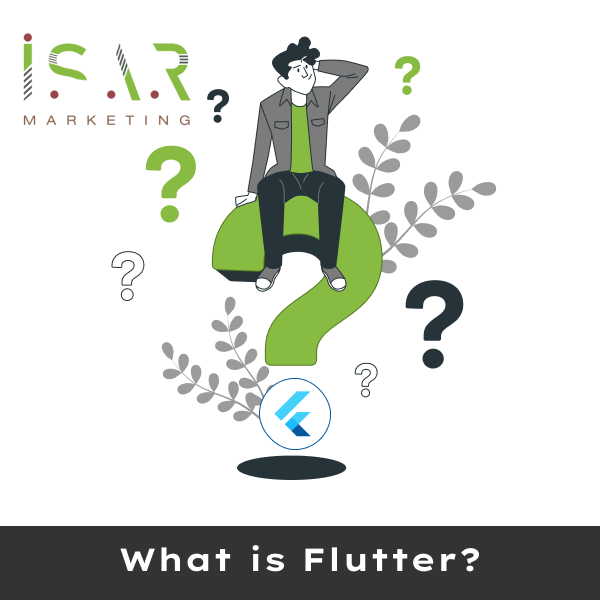introduction:
Mobile applications have continued to become more and more popular. Fortunately, there are many programming tools available for developers who want to build. Among these tools is Flutter, which has proven itself quite recently.
What is Flutter?
Flutter is a free and open source mobile application programming framework created by Google and released in May 2017.
In short, it allows you to create a complete mobile app with just one root. This means that you can use one programming language and one development environment to create two different apps (for iOS and Android).
flutter consists of two important parts:
SDK (Software Development Kit): It is a set of tools that will help you develop your applications. This includes tools to translate your code into native device code (code for iOS and Android).
Framework (UI library based on widgets): A collection of reusable user interface elements (buttons, text inputs, sliders, etc.) that you can customize according to your own needs.
To develop with Flutter, you will use a programming language called Dart. Also, the language was created by Google in October 2011, but it has improved a lot over the past years.
Dart is focused on front-end UI development, and you can use it to build mobile and web applications.
If you know a little bit of programming, Dart is an object typed programming language. You can compare Dart syntax to JavaScript.
Why should you learn Flutter?
I picked a few reasons why I love Flutter. I will give you the details below.
Easy to learn and use:
Flutter is a modern framework, and you can interact with it! It’s fun to create mobile apps with it. If you’ve used Java, Swift, or React Native, you’ll notice how Flutter is different.
Personally, I never really liked mobile app development before I started using Flutter.
What I love about Flutter is that you can build a real native app without a bunch of code.
Quick assembly:
Thanks to Flutter, you can change your code and see the results in real time. This feature is called Hot-Reload. It only takes a short time after saving for the app to update itself.
Significant modifications force you to re-download the app. But if you’re working like a design, for example, and resizing an element, that adjustment will happen in real time!
Ideal for Startup MVPs:
If you want to pitch your product to investors as soon as possible, Flutter is a good choice.
Here are the top 4 reasons to use it in your MVP:
- It’s cheaper to develop a mobile app with Flutter because you don’t need to build and maintain two mobile apps (one for iOS and one for Android).
- One developer is all you need to create your own MVP.
- Efficient – You won’t notice the difference between the original app and the Flutter app.
- It’s beautiful – you can easily use and customize the tools Flutter provides to create a valuable user interface for your customers
Good documentation:
It is important for new technology to have good documentation. But this is not always the case!
You can learn a lot from Flutter’s documentation, and everything is very detailed with easy examples of basic use cases. Every time I had a problem with one of my tools in the code I was able to check the documentation and the answer was there.
A growing community:
Flutter has a strong community, and this is just the beginning!
Supports from Android Studio and VS Code:
Flutter is available in different IDEs. The two primary code editors for developing with this technology are Android Studio (IntelliJ) and VS Code.
Android Studio is a complete software with everything already integrated. You must download Flutter and Dart plugins to get started.
VS Code is a lightweight tool, and everything is configurable through plugins from the market.
I use Android Studio because I don’t need to configure a lot of things to work.
You are free to choose your favorite IDE!
Conclusion
Now what do you think of Flutter? Are you going to start learning it?
I hope this introduction has intrigued and motivated you. Feel free to share this article if you liked it.
The article was prepared by Tariq Othman Agha, Director of the Software Department at ISAR
